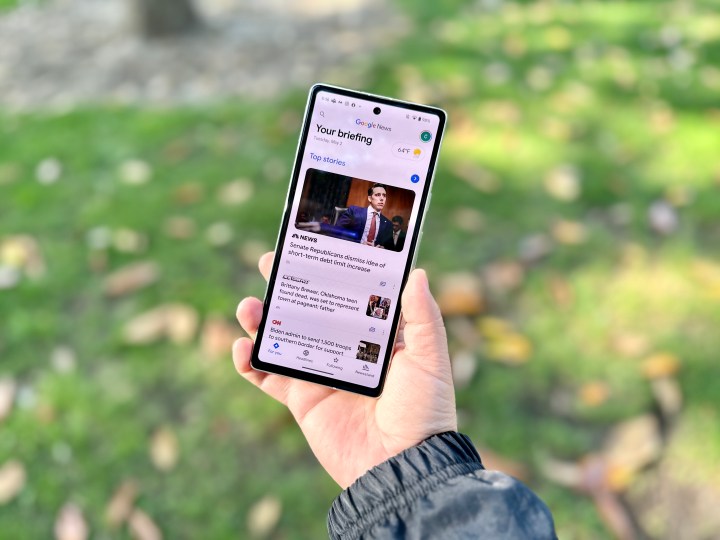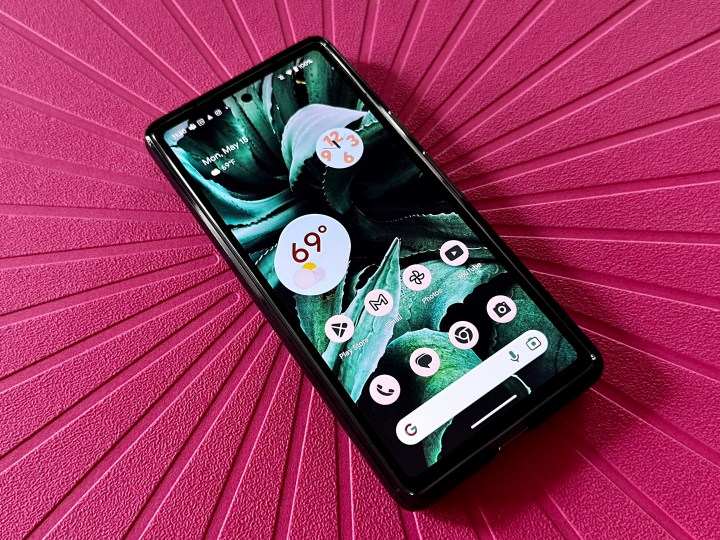
A new Google Pixel A-series has launched, and it’s sure to make reasonably priced phones quiver in their boots. The Google Pixel 7a introduces new features for the A-series, including a 90Hz refresh rate, the highest megapixel count ever on a midrange Google phone, and the Tensor G2 processor. It’s a solid smartphone, and it puts up a good fight against a number of similar devices — including the Samsung Galaxy A54 and even the flagship Google Pixel 7.
But the fact that it’s able to stand up against its flagship brethren highlights a concern — the price. The Pixel 7a costs $499, which is only $100 away from the Pixel 7. That small disparity means there’s a big gap underneath the Pixel 7a for another phone. The $349 Pixel 6a helps to fill some of that gap, but it’s not enough. It’s time Google embraced the budget phone market by creating a Pixel phone for those who want a truly cheap smartphone with the Pixel name. Not convinced? Let me make my case.
A budget Pixel would be good for everyone

The case for an even cheaper Pixel is very simple: great budget phones are awesome, and we need more of them.
There are other reasons why a budget phone would benefit Google, as well as savvy buyers. First, cheap phones sell well. Samsung’s range of A phones made up over 50% of its sales in the final quarter of 2021, and while that included the midrange Galaxy phones, it also included the Galaxy A12 — a $200 budget phone that was Samsung’s biggest single seller for that entire year.
It also helps that Pixel sales are growing. The Pixel 6 and 6 Pro set records in 2021, and the Pixel 7, 7 Pro, and 6a blew past those records in 2022. Word is getting out about the Pixel, and sales are benefiting as a result. It’s easy to see why it’s doing so well — a showstopping camera that’s great in every circumstance paired with a unique and good-looking design is turning heads, even if the software has been troublesome as of late.
I referenced Samsung earlier, but you may have noticed I was using numbers from a few years ago. That’s because more recent sales numbers have been falling, due largely to rising inflation and costs across the board. But that doesn’t mean Google should be cautious. Instead, it should push even harder, as it makes perfect sense to offer people a cheaper product when they have less money to spend. A $200 Pixel would attract people who won’t buy an expensive flagship phone even in normal times and might even be thinking twice about a midrange phone.
Google could offer something unique

An even bigger reason for Google to take a shot at a cheaper phone is it has the ability to create a really good one.
While there have been some Pixel phones that were … questionable, the Pixel A has never been anything but solid. From the Pixel 3a onward, the Pixel A has been excellent, and Google has the chance to repeat that success again by using everything it’s learned and leaning into some advantages it didn’t have a few years ago.
Since 2022, Google has been producing its own processor with the Google Tensor. While these chips still have temperature issues, this flagship processor is a major advantage for a prospective budget Pixel phone. Say this budget Pixel phone doesn’t arrive until next year. By then, we’ll have the Pixel 8, most likely using the Tensor Gen 3 processor. Why not put the first Tensor from the Pixel 6 into a budget Pixel phone? Despite being three years old by then, it’s still a flagship processor and grants exceptional power and the advanced camera AI the Pixel is so known for.
But most notably, the Tensor chip would give the budget Pixel some exceptional longevity.

Apple is hailed for its reliability in the smartphone world, and a big part of that title comes from its ability to offer major updates for its oldest phones year after year. That’s because Apple makes its own hardware and software and is able to dictate whether a past phone’s hardware will work with a new iOS update. Android phones don’t generally have that ability since most use processors created by third-party processor manufacturers — who get to dictate which of their chips will support the newest Android versions. Google develops Android and now has its own chip range, so it’s now the only other major smartphone manufacturer with the same advantage as Apple. It could and should be leveraging that to make a $200 smartphone with years of updates.
Google also has a chance to create a budget phone with an incredible camera. Budget phone cameras tend to have acceptable (but rarely stunning) cameras, but Google could change that. A budget Pixel would likely go back to the tried and tested 12.2-megapixel single lens we last saw in the Pixel 6a and Pixel 5, and honestly, I’m fine with that. The 12.2MP lens, along with Google’s incredible software, would mean a budget Pixel would be a capable snapper.
There are pitfalls, and the biggest one is the software. It’s no secret we’ve despaired at the current state of Android 13 on the Pixel 7 and Pixel 7 Pro. The Pixel 7a seems to have avoided these issues, so it’s entirely possible these bugs will be ironed out by the time a budget Pixel is anywhere within sight.
The end of the Pixel A-series could be the start of something new

There’s no guarantee any of this will come to pass, though, and recent rumors mean this could end up as the deranged fantasies of a single budget phone enthusiast. The rumor mill churns constantly, and currently there are whispers that Google is planning to kill the A-series after the Pixel 7a because the Pixel A has become too similar to the flagship Pixel range.
And that’s absolutely true. In our head-to-head Pixel 7a versus Pixel 7 comparison, it’s abundantly clear that the Pixel 7a is more of a Pixel 7 Lite than a true midrange phone. The differences between the Pixel 7a and the Pixel 7 are minimal at best, and the price really does reflect that. The falling price of the Pixel flagship and the introduction of a Pro variant is more to blame for this small gap than cost rises in the A-series, but regardless, it’s clear there isn’t enough clear blue water between the two phones to justify keeping them both on.
But the end of the Pixel A may well mean the start of something new and beautiful. If the Pixel A is too close to the main Pixel line, then the obvious solution is to either make one cheaper or the other more expensive. The Pixel 7 is hemmed in by the Pro version, but there’s nothing to stop Google from making the Pixel A cheaper — or just launching a brand new, cheaper range. While it would be a shame to ditch the A brand entirely (and an enormous waste of an established name), a silver lining of the end of the Pixel A’s lifemay be the start of a new budget Pixel line — and I can’t wait for it.
